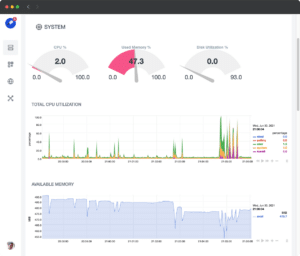SUSE has unveiled SUSE AI, a specialized stack built on SUSE Rancher Prime that targets the toughest enterprise AI bottleneck: operating models and AI applications at scale with security, observability, and predictable cost across public cloud, private cloud, on-prem, and even air-gapped environments. The company’s promise is to strip away “glue” projects and speed the jump from pilot to production—without surrendering data sovereignty.
“The future of enterprise IT will run on secure, containerized AI applications, with specialized workloads across any hybrid cloud,” says Thomas Di Giacomo, SUSE’s Chief Product & Technology Officer. “Rancher Prime is the solid base; SUSE AI turns it into a real runway to production for AI.”
The timing is pointed. According to IDC, by 2028 65% of “build-your-own” agentic AI projects will be abandoned for missing ROI, sunk by fragmented integrations, opaque costs, and lack of control. SUSE’s counter is a unified platform with ready components, security by design, and end-to-end telemetry so teams can operationalize AI and track real returns.
What SUSE AI brings to the table
SUSE AI sits atop SUSE Rancher Prime—a cloud-native management platform with CNCF conformance—and makes three core promises: operational simplicity, security, and observability.
- Universal Proxy (MCP) (tech preview) — SUSE integrates a Model Context Protocol proxy to centralize connections to heterogeneous model endpoints, optimize model cost, and tighten access control around context and data. It complements MCP components arriving in SUSE Linux Enterprise Server 16 and points toward an ecosystem where tools and agents speak a common context dialect without fragile, bespoke integrations.
- Accelerated AI Inference — The inference portfolio expands with high-performance engines like vLLM to deliver fast, efficient, and scalable LLM inference. Operationally, the aim is to lower latency, increase throughput per GPU, and shorten time-to-production.
- AI Observability — Beyond basic logging, SUSE AI instruments models, pipelines, and services. It ships with the OpenTelemetry (OTel) Operator for auto-instrumentation, pre-configured observability for Ollama, Open WebUI, and Milvus (via Open WebUI Pipelines), plus enhanced metrics for performance and predictability. The goal: catch bottlenecks (e.g., hit-rate drops, queue timeouts, memory spikes) before they degrade user experience.
An ecosystem that reduces risk and integration toil
To “close the loop,” SUSE grows partnerships with ClearML and Katonic (MLOps & GenAI), AI & Partners (AI governance and compliance), Avesha (GPU orchestration), and Altair (a Siemens company) for HPC + AI scenarios—minimizing integration overhead while maximizing capability with certified pieces.
Rancher Prime, the operational bedrock: agentic Ops for K8s, micro-segmentation, and more
SUSE Rancher Prime—the foundation for SUSE AI and SUSE Edge—advances on several fronts:
- Liz, an agentic AI assistant (tech preview) with cluster context to help proactively detect incidents, boost performance, and shrink Kubernetes troubleshooting time.
- Virtual clusters (GA): “clusters within the cluster” to isolate AI workloads, optimize GPU utilization, and accelerate per-team/per-project environments.
- Full-stack management: simpler governance of the entire SUSE stack—from OS to workloads—for organizations adopting a 100% SUSE architecture.
- VMware modernization: SUSE Virtualization adds network micro-segmentation (tech preview), decoupling network functions from physical hardware and enabling software-defined networking for both VMs and containers.
- Certified storage: the partner roster adds Fujitsu, Hitachi, HPE, and Lenovo, helping customers reuse existing storage investments.
- SUSE Observability: a powerful dashboard editor turns operational data into shared, actionable knowledge; with OTel, visibility becomes unified beyond Kubernetes (databases, message brokers, external services), driving faster MTTR.
For developers: Rancher Developer Access
SUSE introduces Rancher Developer Access, a UI extension that brings SUSE Application Collection into Rancher Desktop. It’s a curated library of open-source apps and signed base images from SUSE so developers can build and ship secure, production-ready applications using trusted content only.
How it stacks up against RHEL (Red Hat) and Ubuntu (Canonical)
Enterprises weighing a platform for AI + Kubernetes usually compare the big three. Below is a high-level comparison focused on capabilities and approach:
| Dimension | SUSE (Rancher Prime + SUSE AI) | RHEL / Red Hat | Ubuntu / Canonical |
|---|---|---|---|
| K8s base / Mgmt | Rancher Prime (multi-K8s, multi-cloud, on-prem, air-gapped). Virtual clusters (GA), Liz agent (preview). | OpenShift (opinionated K8s with integrated CI/CD and strong default security). Large enterprise ecosystem. | Charmed K8s / MicroK8s (lightweight, modular). Mgmt with Juju and MAAS on bare metal. |
| AI native | SUSE AI: Universal Proxy (MCP), vLLM, AI observability (OTel, Ollama, Open WebUI, Milvus). | OpenShift AI (formerly RHODS): MLOps, notebooks, model serving, pipelines integrated with OpenShift. | Ubuntu AI Stack (NVIDIA/AMD/Intel), MicroK8s add-ons for AI, operators/charms (MLOps, LLMs). |
| Observability | SUSE Observability + OTel by default; ready dashboards and inference metrics. | OpenShift Monitoring/Logging stack (Prometheus/Grafana/Loki/Alertmanager) and mature operators. | Canonical Observability Stack (Prometheus/Loki/Grafana) + OTel; strong DIY flexibility. |
| Security | Focus on sovereignty & air-gapped; micro-segmentation (preview); signed content and access control. | SELinux enforced, policies, compliance operators; strong defaults out of the box. | AppArmor by default, hardening available; Ubuntu Pro with certifications & livepatching. |
| Accelerators / GPU | Partners (e.g., Avesha) for GPU orchestration; virtual clusters to maximize usage. | NVIDIA GPU Operator, mature GPU ecosystem in OpenShift; well-trodden device plugins. | MicroK8s/Charmed K8s GPU support; fast uptake of drivers and add-ons. |
| Governance / Standards | CNCF-conformant, emphasis on MCP, OTel, and air-gapped ops. | Comprehensive governance in OpenShift; policy frameworks and operators; strong ecosystem. | Maximum openness and speed; governance is highly configurable (more DIY). |
| Adoption model | Multi-K8s platform + integrated AI stack; data & cost control. | Opinionated end-to-end platform (OpenShift + OpenShift AI). | Flexibility & agility to compose “a la carte” with MicroK8s/Charmed K8s/Juju. |
Quick read:
- SUSE stands out when you must run heterogeneous AI across hybrid/air-gapped setups, want pre-wired AI observability, and value a native MCP layer that unifies context to models.
- RHEL/OpenShift shines if you want a tightly-integrated, opinionated “dev-to-prod” platform with MLOps and governance embedded (fewer moving parts to assemble).
- Ubuntu/Canonical excels where speed and flexibility matter (and budgets are lean) or in distributed edge, assuming teams are comfortable assembling with Juju/MicroK8s.
Note: MCP (Model Context Protocol) is an emerging standard; SUSE pushes it natively via Universal Proxy. As of this announcement, RHEL and Ubuntu interoperate through ecosystem tooling but have not announced an equivalent native MCP proxy in their base platforms.
Where each one fits (decision guide)
- Maximum compliance & sovereignty (public sector, pharma, defense, banking): SUSE or RHEL. If you need extreme air-gapped plus AI observability out of the box, SUSE is comfortable; if you prefer an opinionated suite with “by-the-book” certifications, OpenShift is a safe bet.
- Edge & rapid AI deployments: Ubuntu with MicroK8s and Juju offers agility and small footprint; SUSE and RHEL also play here, with heavier footprints but more “audit-ready” defaults.
- All-in MLOps “from the box”: OpenShift AI (RHEL).
- Complex hybrid with mixed clouds & sensitive data: SUSE (Rancher Prime + SUSE AI) for sovereignty, multi-K8s, and MCP.
Adoption (and savings) checklist
- Models & KPIs — set latency targets, throughput, cost per inference, and SLA per service.
- Sovereignty — define which data never leaves and where air-gapped applies.
- GPU & TCO — turn on virtual clusters and/or GPU operators; measure actual utilization and tune quotas.
- AI observability — standardize on OTel and inference quality dashboards; alert on model degradation, not only uptime.
- Supply chain — use signed images (SUSE Application Collection / official repos) and continuous scanners.
- AI governance — implement data policies, explainability, and a continuous-improvement loop; lean on partners where regulation demands.
Bottom line
SUSE is aiming squarely at the most delicate part of enterprise AI: turning shiny prototypes into stable services with security, observability, and measurable cost. SUSE AI (with MCP, vLLM, and OTel as first-class citizens) on Rancher Prime works to remove friction where it hurts most. Against RHEL/OpenShift and Ubuntu/Canonical, SUSE’s proposal differentiates with its emphasis on sovereignty, multi-K8s, and a native first step toward a common context protocol. No platform erases complexity—but SUSE’s goal is to reduce the variables and provide tools to manage them.
FAQs
What advantages does SUSE AI offer vs. OpenShift AI or a MicroK8s/Juju DIY stack for production AI?
SUSE AI leads with pre-configured AI observability (OTel, Ollama, Open WebUI, Milvus), a Universal Proxy (MCP) to centralize models and context, and strong sovereignty/air-gapped operations. OpenShift AI delivers a highly integrated MLOps/serving suite; Ubuntu wins on flexibility and speed with MicroK8s/Juju—at the cost of more assembly and governance work.
How does SUSE help optimize GPU cost (TCO)?
With virtual clusters to isolate and densify workloads, partnerships (e.g., Avesha) for GPU orchestration, and inference metrics that guide batching, pooling, and scheduling. Fewer idle GPUs = lower cost per inference.
What is MCP (Model Context Protocol) and why does it matter?
An open protocol for exchanging context between tools/services and models. It reduces custom glue and, via Universal Proxy in SUSE AI, simplifies connections, credentials, and access controls across hybrid and regulated environments.
Can I run fully air-gapped and meet strict regulatory needs?
Yes. SUSE prioritizes air-gapped, consistent identity & permissions, micro-segmentation (preview), and full traceability. Define trust zones, data policies, and compliance dashboards from day one.











